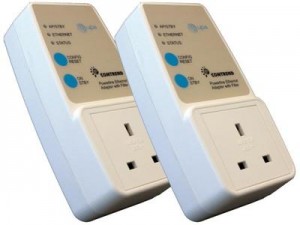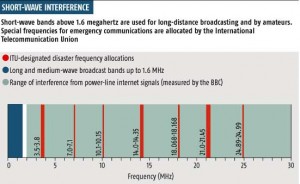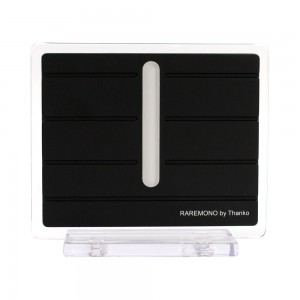Whether you’re new to shortwave radio listening or have been an amateur radio operator for years, more than likely you’ve occasionally encountered electrical interference, that annoying hum or buzz that permeates your listening experience. This noise can often be difficult to pinpoint or eliminate. For most of us, the common culprits are fluorescent lights, computer monitors, televisions or even so-called “wall warts” (those ubiquitous AC adapters we use for most consumer electronics). For those of us living in sparsely populated rural areas, we can more easily find noisy interference in our own homes or on our farms (electric fences are notorious sound interrupters). If you live in an urban area, identifying interference can be a constant battle, since it may be the new LCD TV of the couple living in the apartment above you.
Or, even worse, the source of radio interference could be installed in your neighbors’ homes, in the form of a nationally mass-marketed home entertainment device promoted by your telephone company. That was the case for SWLer Mike Trodd in the United Kingdom; his neighbors installed a “BT Vision” multimedia entertainment package with Comtrend power line adaptors offered by British Telecom. “I switched on my short wave set to find a loud +20db screaming noise on all HF frequencies,” Mike describes. “Initially I suspected the actual home hub, but soon worked out it was the power line adaptors that were the cause.”
The fact is, these power line adapters use a smaller scale, more local version of a technology that amateur radio operators have long fought–namely “BPL”, or Broadband over Power Lines. In this case, though, Comtrend’s power line adapters turn your home’s electrical system into a communications system–also called Power Line Telecom (PLT). This novel (and possibly illegal) device has one crippling side-effect: loud broadband noise across most of the shortwave radio listening spectrum (see figure 1).
What did Mike do after discovering the source of his interference? He contacted the authorities, and upon learning that, despite laws protecting radio, there is no effort being made at enforcement, he founded a program to fight the interference. “I created UKQRM because once I discovered the source,” he says, “I was disgusted that it was being allowed and nothing was being done at all!”
So, how bad is the noise, anyway? Take a look at Mike’s first homemade video:
It’s pretty obvious that the interference is substantial and will deafen shortwave and ham radios. How did British Telecom respond to Mike’s well-documented evidence of the problem? “[They] were dreadful!” he exclaimed.”Initially you just can’t get any information out of anyone. Their dreadful overseas call centres are a waste of time. Only when a letter was sent to the chairman was any kind of reply received.” But even this was less than satisfactory. “To date,” he adds,”BT has never communicated its point of view.”
Are you safe from PLT interference if you don’t live in the UK? “PLT is already rolling out, uncontrolled,” Mike states, “across the EU. Portugal is suffering greatly as there are not even notches. In the US, PLT again is gathering speed. As successive governments give this illegal equipment the green card; I see a day when the HF spectrum is lost to us all.”
I asked Mike what radio operators and listeners can do? “We need support from radio listeners; in the main, this needs to be [in] an education role. Tell anyone who will listen about this. Point out that PLT does not meet regulations and laws and yet it’s being driven by the EU and governments, driven over the people with no regard at all.”
I urge you to take a look at UKQRM’s website (15 Oct 2011 update: site now called “Ban PTL) and see what you can do to fight interference on our radio spectrum.
Mike, on behalf of all radio listeners, thank you for fighting the good fight!



